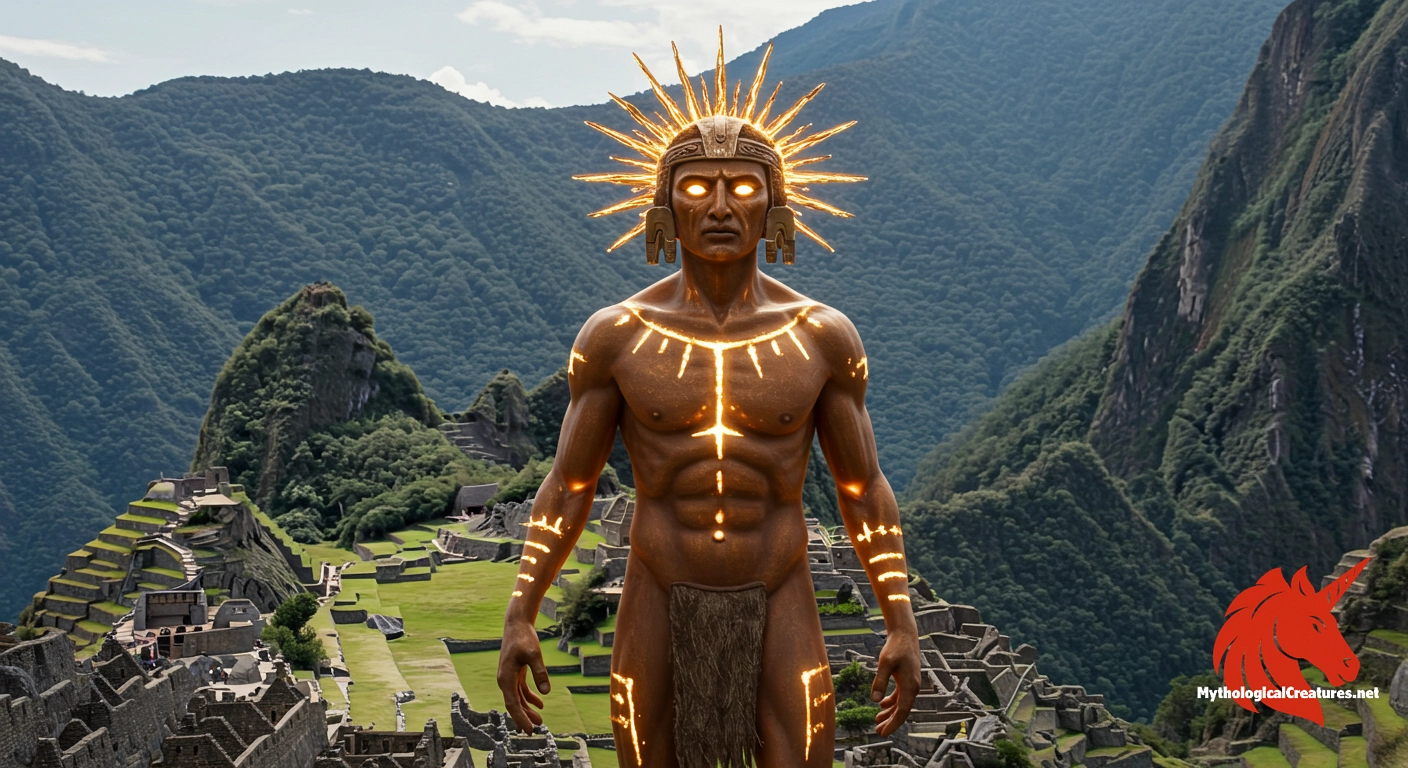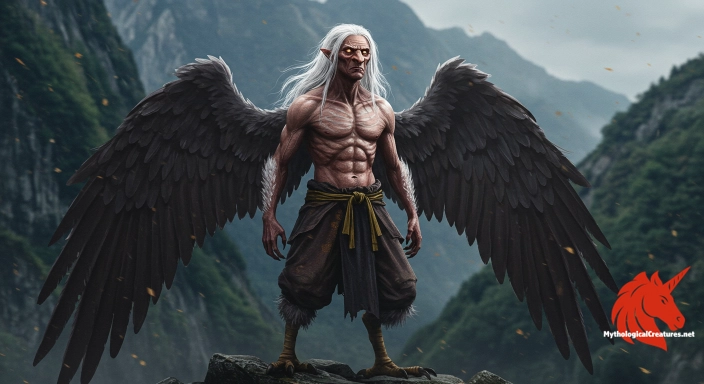Inti: Inti is the ancient Inca sun god revered as the patron deity of the Inca Empire.

Inti
Inti - Inti is vital in Inca cosmology, symbolising life, growth, and rulership, and is closely linked to state power and divine legitimacy.
Origins & First Encounters
Inti emerges as a central figure in the ancient Inca pantheon, celebrated as the radiant embodiment of the sun’s life-giving force. His divine essence was not confined to a singular aspect but was intricately divided to mirror the various stages of the sun’s journey throughout the day. Rooted in a complex cosmogony, Inti is believed to have originated from Viracocha, the supreme creator deity, thereby linking him intimately to the forces of creation and renewal. His veneration was a cornerstone of Inca statecraft, with the sun god serving not only as a celestial guide but also as a symbol of imperial legitimacy and cosmic order. The rituals and festivals dedicated to Inti, such as those associated with the celebrated celebration of solar cycles, underscored his importance in both the spiritual and temporal realms. His mythic stature helped to unite diverse communities under a common cultural and religious framework. As the archetype of celestial benevolence, Inti was often invoked to ensure agricultural fertility and collective prosperity. The multifaceted nature of his persona continues to captivate those who explore the intricate interplay of myth and empire in the Andes. Inti’s enduring legacy is imbued with a blend of historical grandeur and transcendent symbolism that has resonated across time.
Source Texts & Tale Variants
The narrative of Inti is preserved through a mosaic of sources that range from early colonial chronicles to indigenous oral traditions. Spanish chroniclers provided detailed accounts of the elaborate state ceremonies and sacred rituals that celebrated his luminous influence. Native manuscripts, though sometimes fragmented, offer vivid portrayals of his divine origins and his pivotal role in the cosmic order. Alternative story variants exist, with some accounts emphasising his birth from Viracocha and others linking him more directly to the natural cycles of the sun. In various regional narratives, Inti is portrayed with subtle differences, reflective of local traditions and interpretations. Multiple textual records, including codices and later ethnographic studies, have contributed to our understanding of how the sun god was worshipped. The integration of material culture, archaeological evidence, and literary sources paints a picture of an evolving deity whose myth was adapted to meet the needs of a dynamic society. Oral recitations passed down through generations have helped sustain the legend, occasionally interweaving with colonial narratives. These diverse sources collectively underscore the complexity and adaptability of Inti’s mythos, ensuring that his story continues to inspire both scholarly inquiry and cultural pride.
Form & Powers
Artistic representations of Inti are resplendent with the symbolism of the sun’s effulgence and radiance. His image is often conveyed as a majestic figure whose form is suffused with vibrant golden hues that mirror the brilliance of daylight. Traditional depictions render him with an energetic countenance, featuring eyes that seem to shimmer with the intensity of solar flares. He is frequently adorned in richly embroidered regalia that incorporates motifs of sunbursts and celestial patterns, emphasising his divine association with life and light. The crown or halo that encircles his head is a recurring element in iconography, symbolising the inexorable power of the sun. Some portrayals present him as a youthful, radiant deity at the break of dawn, while others capture him in a more stately manner at the peak of the midday sun. The interplay of light and shadow in these artistic creations serves to enhance the dynamic qualities attributed to his persona. Variations in size and form—ranging from a full-bodied human figure to an abstract, radiant disc—attest to both regional and temporal adaptations. The physical imagery of Inti continues to evoke the awe-inspiring natural phenomenon of the sun, resonating with the themes of renewal and sublime power.
Regional Faces
Across the wide expanse of the Andean region, the worship of Inti adapted to a variety of cultural contexts, each adding unique nuances to his myth. In the heartland of the Inca Empire, he was revered as the paramount celestial force, while in peripheral areas his character was often intermingled with local deities. In some Andean communities, rituals celebrating Inti incorporated elements of fertility and rain, thereby linking the sun’s power directly to agricultural success. The linguistic adaptations—where the name ‘Inti’ finds counterparts such as Antu in Mapuche traditions—illustrate the fluidity of his divine identity. Localised festivals and ceremonial practices often highlighted the protective and benevolent aspects of the sun, adapted to suit the environmental and social needs of each community. The amalgamation of central Inca religious doctrine with regional customs led to a rich diversity in the way he was portrayed. Terms and symbolism varied subtly, reflecting the distinct spiritual landscapes of each area while maintaining the core essence of a life-sustaining celestial force. This syncretism showcases the adaptability of Inti’s mythology, ensuring his relevance in both highland and lowland cultural expressions. The region-to-region variations in his depiction underscore a broader dialogue between imperial religious policies and indigenous traditions.
Cultural Parallels
The myth of Inti invites parallel comparisons with solar deities from many other ancient cultures, revealing common themes of birth, renewal, and cosmic order. Much like Ra of Egypt, who journeyed across the sky in his solar boat, Inti embodies the cyclical nature of day and night and the eternal resurgence of life. His multifaceted identity, reflecting distinct phases of the sun, finds resonance with the layered symbolism seen in other traditions such as the Greek Helios or the Hindu Surya. In each of these mythologies, the sun functions not only as a giver of life but also as a pivotal marker in the progression of time and human civilisation. Comparative studies highlight that despite regional differences, these deities share attributes of omnipotence and the ability to influence agriculture, destiny, and cosmic harmony. The ritualistic elements surrounding the worship of Inti are akin to the grand ceremonies associated with other solar gods, emphasizing light as a unifying force in human affairs. The varied artistic representations, from resplendent crowns to radiant bodies, create an interconnection that spans continents and epochs. Such cross-cultural reflections underscore a universal human fascination with the celestial, weaving together disparate myths into a tapestry of shared symbolism. Through this comparative lens, Inti is seen not merely as an isolated figure but as part of a broader human endeavour to celebrate and understand the life-affirming power of the sun.
Legacy & Modern Evolution
The evolution of Inti’s mythic identity reflects a dynamic narrative that has transitioned from ancient state worship to a symbol of cultural revival in the modern era. Once central to the political and ritualistic life of the Inca Empire, his cult served as a unifying force that underpinned both governance and social cohesion. The Spanish conquest ushered in a period of transformation, during which the overt religious veneration of Inti was suppressed yet his legacy managed to survive through clandestine practices and syncretic adaptations. In contemporary discussions, Inti has been reimagined as a potent emblem of indigenous pride and resistance, whose remembrance honours both ancient traditions and the struggle for cultural autonomy. Modern festivals and artistic renditions have revived the imagery of the radiant sun deity, often integrating traditional symbols with new expressions of identity and resilience. Scholars and cultural activists alike consider Inti’s myth as a living heritage, one that continues to influence literature, art, and the collective memory of Andean peoples. His evolving narrative mirrors broader themes of loss, recovery, and the enduring power of myth in shaping communal identities. The enduring symbolism of the sun—its capacity to nurture, energise, and transform—remains a compelling force in modern cultural and political discourse. Inti’s storied past, coupled with his revived relevance in modern aesthetics and spirituality, cements his status as a timeless emblem of both celestial and earthly power.
Interesting Fact
It is noteworthy that the term 'inti' is borrowed from Puquina, highlighting the intercultural exchanges among ancient Andean peoples and illustrating the shared significance of the sun across different cultures.
Limited sponsor opportunity
One slot, carefully chosen partners
We only feature a small number of relevant sponsors at any time. If you create serious myth content, we would like to hear from you.
Partner with usQuick Creature Info
Origin:
Associations:
Our Mythic Legendary Rating:

Habitat:
Supernatural Powers:
Physical Attributes:
Abilities:
Behavior:
Weaknesses:
Lore:
Related Creatures, Tales or Lore
- RRa (Egyptian Sun God)
- SSurya (Hindu Sun God)
- AApollo (Greek Sun God)
References
Discover Another Mythical Legend You May Not Have Heard Of?
Uncover the mysteries of ancient folklore and expand your knowledge of legendary beings from cultures around the world.
Dare to Meet the Sōjōbō....
Curated by the Mythological Creatures Team
Series editor: Mythological Creatures Directory
Primary desk: Americas & Indigenous Traditions Desk
(rev. November 2025)
